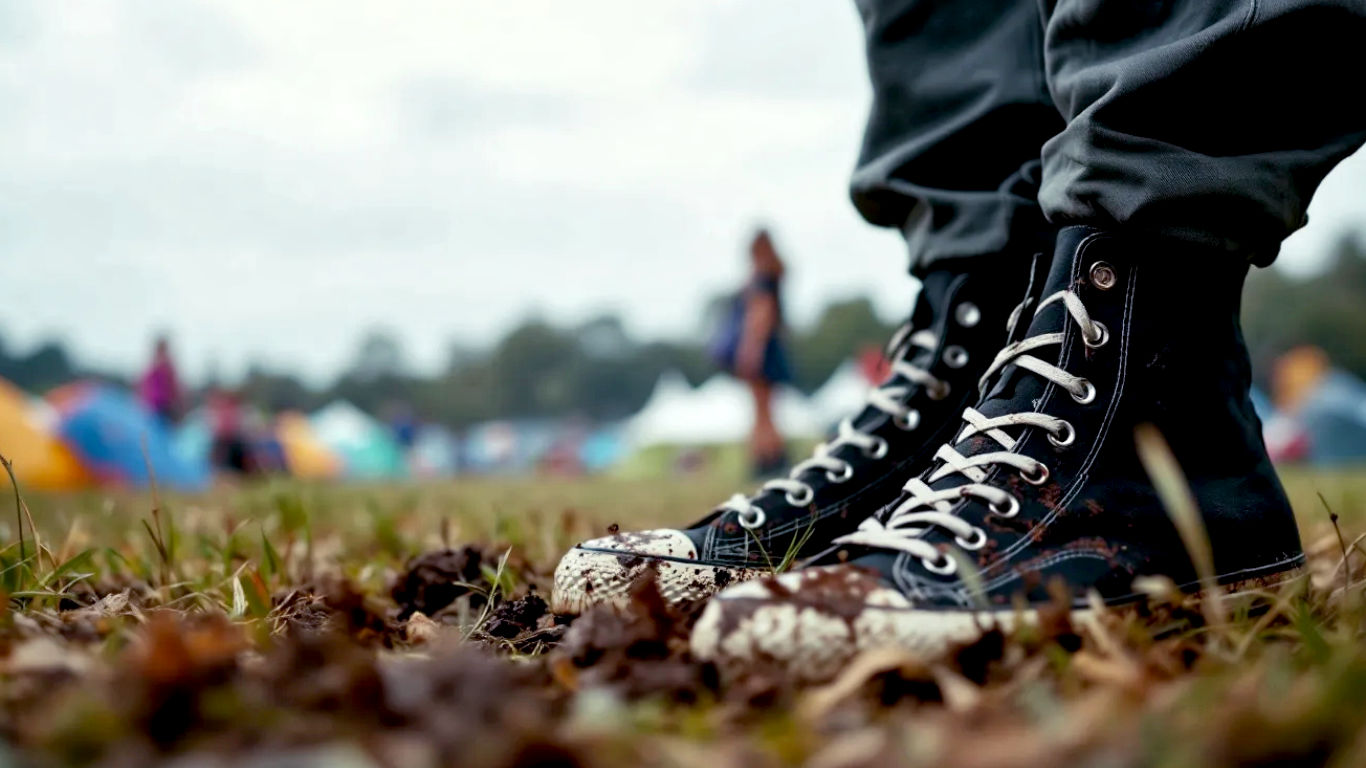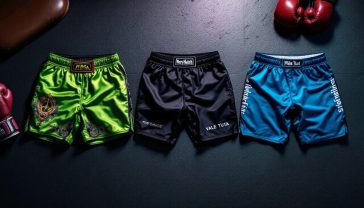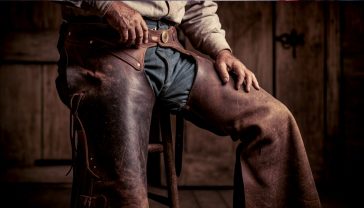Chucks – The History of Converse All-Stars
How did a simple American sports shoe become a British style staple? Explore the century-long story of the Converse All-Star and its place in UK culture.

This post may contain affiliate links. If you make a purchase through these links, we may earn a commission at no additional cost to you.
Converse All-Stars: More Than a Century of Cool
It’s just a simple canvas shoe, isn’t it? A bit of rubber on the bottom, some fabric on top, and a few laces to hold it all together. Yet, somehow, the Converse All-Star has become one of the most famous shoes in the world. For more than 100 years, it’s been worn by basketball players, rock stars, artists, skaters, and probably someone you know. It’s a shoe that’s popped up in nearly every corner of British life, from muddy festival fields in Somerset to the polished floors of London art galleries.
But how did this happen? How did a shoe designed for a sport that most Brits didn’t play for decades become a must-have for so many people? It’s a story that’s about more than just fashion. It’s about music, rebellion, and the simple comfort of putting on a pair of trainers that feel like they’ve always been around. This is the story of the Converse All-Star, a true icon that has managed to stay cool for over a century.
The Humble Beginnings: A Star is Born
From Rubber Boots to Basketball Courts
The story doesn’t start with a flash of inspiration for a trendy trainer. It begins with something far more practical: rubber. In 1908, a man named Marquis Mills Converse opened the Converse Rubber Shoe Company in Malden, Massachusetts, USA. Back then, his company made sensible things like rubber boots and galoshes—the kind of footwear you’d need to get through a wet and snowy New England winter. They were sturdy and reliable, but they weren’t exactly exciting.
By the 1910s, a new sport was getting popular in America: basketball. It was fast, played indoors, and required shoes that could grip the polished wooden floors without slipping. The players needed something that was light but also offered support for all the jumping and quick turns. Converse saw an opportunity.
In 1917, the company designed a shoe specifically for this new game. It was called the Converse “Non-Skid.” It had a thick rubber sole for grip and a canvas upper that went above the ankle to give players extra support. This was the shoe that would one day become the All-Star. At first, it was a pretty simple affair, available only in a natural brown canvas colour with black trim. It did the job, but it hadn’t yet found its magic.
Enter Chuck Taylor: The First Influencer?
The shoe’s big break came a few years later, thanks to a basketball player named Charles ‘Chuck’ H. Taylor. Chuck wasn’t just a player; he was a true believer in the sport and in the shoe. In 1921, he walked into the Converse office complaining of sore feet and, legend has it, gave them a few ideas on how to make the shoe better.
Converse was so impressed with his passion and his ideas that they gave him a job. Chuck Taylor became the shoe’s biggest promoter. He was part salesman, part coach. He travelled all over America in his white Cadillac, hosting basketball clinics and spreading the word about the sport and the shoes. He was brilliant at it. He taught people how to play and, at the same time, showed them why they needed a pair of Converse to do it well.
He suggested a few tweaks to the design, like adding more flexibility and support around the ankle. His biggest contribution, however, was the famous circular patch on the inside of the ankle. It was designed to protect the ankle bone. In 1932, in recognition of his incredible work, Converse added his signature to that very patch. The shoe was officially renamed the Converse Chuck Taylor All-Star. Without really knowing it, Chuck Taylor had become one of the world’s first sports endorsers, long before footballers had million-pound boot deals. His name became forever linked with the shoe he loved.
For the next few decades, the All-Star was the basketball shoe. If you played basketball in America, you were almost certainly wearing a pair of “Chucks.” They were worn by high school teams, university players, and even professional athletes. During World War II, American soldiers even did their training in white high-top Chuck Taylors, cementing the shoe’s place as a piece of classic Americana.
From Sport to Subculture: The All-Star Crosses the Pond
For a long time, the Chuck Taylor was strictly an American sports shoe. In the UK, our idea of a trainer was a simple plimsoll, used for PE lessons at school. But as American culture began to flood Britain after the war—through films, music, and television—new styles started to arrive.
The Rise of the Rebel
By the 1950s and 60s, the All-Star had started to lose its place as the top basketball shoe. New companies were making trainers with more advanced technology, using materials like leather and suede. But just as it was fading from the courts, it found a new home on the streets.
The shoe’s simple, no-fuss design and affordable price made it popular with people who didn’t want to follow the mainstream. It became a symbol of rebellion. In America, famous actors like James Dean were pictured wearing them, giving the shoe an anti-establishment cool. It wasn’t a flashy, expensive shoe; it was for people who stood apart from the crowd.
This rebellious spirit was what helped it find its feet in Britain. The UK’s youth cultures were exploding. From the Teddy Boys to the Mods and Rockers, young people were looking for ways to express themselves through their clothes and music. While the All-Star wasn’t a central part of these early British subcultures, it was slowly starting to appear, brought back by people who had travelled to the States or seen them in imported magazines.
The Sound of a Generation: Punk Rock and Beyond
The All-Star’s big moment in Britain came in the 1970s with the arrival of punk rock. Punk was all about stripping things back to the basics. It was loud, fast, and angry. It was a reaction against the bloated, over-produced rock music of the time. Punks wanted something real and raw, and that attitude extended to their fashion. They wore ripped jeans, leather jackets, and simple, battered footwear.
The Converse All-Star was the perfect punk shoe. It was cheap, tough, and looked even better when it was a bit scuffed up. It had no frills, no fancy branding—it was the opposite of a flashy fashion statement. American punk bands like The Ramones were almost never seen without their black low-top All-Stars. When they toured the UK, British punks took notice. Soon, bands like The Clash and the Sex Pistols were seen wearing them, and the shoe became an essential part of the punk uniform.
If you were a punk in London or Manchester in the late 70s, a pair of Chucks showed you were part of the tribe. You could draw on them, stick safety pins in them, and wear them until they literally fell apart. They were a blank canvas for personal expression.
This connection with music cemented the All-Star’s place in British youth culture. Through the 80s and 90s, the shoe was adopted by one subculture after another. It was worn by indie kids, goths, skaters, and grunge fans. When Kurt Cobain, the frontman of Nirvana, was rarely seen out of his battered Chuck Taylors, a whole new generation of teenagers went out and bought a pair. The shoe had become a quiet signal that you were into alternative music and culture. You weren’t a jock or a prep; you were something different.
A Shoe for Everyone: The All-Star Goes Mainstream
By the turn of the millennium, something strange had happened. The Converse All-Star was no longer just for rebels and rock stars. It had become a true fashion staple, worn by everyone from school kids to celebrities. How did a shoe with such strong counter-culture roots become so popular?
The Indie and Britpop Effect
In the 1990s and early 2000s, British music was dominated by Britpop and the indie scene that followed. Bands like Blur, Oasis, and The Strokes (from the US, but huge in the UK) had a massive influence on fashion. Their style was casual and cool—think parkas, skinny jeans, and, of course, a pair of classic trainers. The All-Star fit the look perfectly.
Musicians like Alex Turner from the Arctic Monkeys and Kelly Jones from Stereophonics were often spotted in Chucks. This kept the shoe connected to cool, credible music while its audience grew bigger and bigger. Going to a festival like Glastonbury or Reading in the early 2000s meant seeing thousands upon thousands of pairs of All-Stars, usually caked in mud by the end of the weekend.
From the High Street to High Fashion
As the shoe’s popularity grew, high-street shops across the UK started stocking them in every colour imaginable. Suddenly, you didn’t have to go to a specialist import shop to find a pair. You could buy them in Office or Schuh. This made them accessible to a whole new audience. Mums were buying them for their kids, and then maybe grabbing a pair for themselves.
The shoe’s simple, timeless design meant it could be worn with almost anything. Girls wore them with dresses and skirts, boys wore them with jeans and chinos. They became a go-to weekend shoe, as much a part of the British uniform as a pair of Dr. Martens or a trench coat.
Even high-fashion designers started to take notice. Brands like Comme des Garçons and Maison Margiela have collaborated with Converse, creating special-edition All-Stars that sell for hundreds of pounds. These collaborations introduced the shoe to a world of luxury fashion, proving just how versatile its design really is. It’s one of the few items of clothing that you’re just as likely to see on a Parisian catwalk as you are in a skatepark in Milton Keynes.
The Anatomy of an Icon: What Makes an All-Star?
The design of the Chuck Taylor All-Star has barely changed in 100 years. It’s this consistency that makes it so recognisable. But what are the key parts that make up this iconic shoe?
The Key Features
Let’s break it down. When you look at a classic All-Star, you’ll notice a few distinct features:
- The Canvas Upper: The top part of the shoe is made from a simple but durable piece of canvas. It’s light, breathable, and over time, it moulds to the shape of your foot. This is why a well-worn pair of Chucks is so comfortable. It’s also what makes them a great canvas for customisation.
- The Rubber Toe Cap: The distinctive rounded rubber cap at the front of the shoe was originally designed to protect the player’s toes during a basketball game. Now, it’s one of the shoe’s most recognisable features.
- The All-Star Patch: On the high-top version, you’ll find the circular patch on the inner ankle. This is where you’ll see the Converse All-Star logo and, of course, Chuck Taylor’s signature. An interesting bit of trivia: many people wonder why the patch is on the inside. It was originally placed there to protect the ankle bone from rubbing against the other shoe during play.
- The Diamond-Patterned Sole: Flip the shoe over, and you’ll see the famous diamond-shaped tread on the rubber sole. This was designed for one reason: grip. It was meant to stop players from sliding on slippery basketball courts. It’s still a key part of the shoe’s identity.
- The Twin Stripes: On most classic models, you’ll see two thin stripes running along the rubber sidewall (the ‘foxing’). These are usually black or a combination of red and blue, adding a subtle touch of detail to the design.
The Chuck 70: A Nod to the Past
In recent years, you might have noticed a slightly different version of the All-Star in shops: the Chuck 70. It looks very similar to the classic model but is built to be a more premium version, recreating what the shoe was like back in the 1970s.
So, what’s the difference? The Chuck 70 has:
- Thicker canvas: It uses a heavier, more durable canvas than the standard All-Star.
- A glossier, slightly yellowed sole: This is meant to look like the vintage rubber used on the older shoes. The rubber sidewall is also slightly higher.
- More cushioning: It has a more comfortable, cushioned insole, making it better for walking around all day.
- A vintage heel patch: Instead of the modern Converse logo on the heel, it has a black patch with white stars, just like the originals from the 70s.
The Chuck 70 has become a huge hit with trainer fans and people who appreciate the small details. It’s a celebration of the shoe’s heritage, made with slightly better materials.
How to Wear Them: The All-Star in Modern British Style
One of the reasons the All-Star has lasted so long is that it’s incredibly easy to wear. It’s a true style chameleon. Here are a few ways it fits into the modern British wardrobe.
The Casual Classic
This is the easiest look to pull off. A pair of black or white All-Stars with a good pair of jeans and a simple t-shirt or jumper is a timeless combination. It’s a look that works for anyone, at any age. It’s perfect for a trip to the pub, a walk in the park, or a casual day at the office (if your workplace is relaxed enough). Low-tops tend to work best for this simple, understated look.
A Touch of Smart-Casual
Don’t be afraid to dress your Chucks up a bit. A pair of clean, box-fresh All-Stars can look great with smarter trousers like chinos or even a relaxed suit. This look has become really popular for creative jobs or even for modern weddings. The key is to keep the rest of the outfit sharp and the trainers themselves in good condition. A crisp white or black pair works best here.
Festival and Gig-Ready
This is the All-Star in its natural habitat. For decades, they have been the unofficial shoe of music festivals and gigs across the UK. Paired with shorts, a band t-shirt, or a summer dress, they are practical and stylish. And nobody minds if they get a bit muddy—it all adds to the character.
A Pop of Colour
While black and white are the classic choices, All-Stars come in hundreds of different colours and patterns. A brightly coloured pair can be a great way to add a bit of fun to an otherwise simple outfit. A red, yellow, or blue pair of Chucks can be the statement piece that ties a whole look together.
The Future of an Icon: Where Does the All-Star Go from Here?
After more than 100 years, the Converse All-Star is more popular than ever. But in a world of fast fashion and ever-changing trends, how does it stay relevant?
Sustainability and Innovation
One of the biggest challenges for any modern brand is sustainability. Converse is now making efforts to produce its shoes in a more environmentally friendly way. The Converse Renew line, for example, uses recycled materials like plastic bottles and old jeans to create the canvas uppers. It’s a way of keeping the classic design while thinking about the future of the planet.
The company has also tried to update the shoe’s technology. In 2015, they released the Chuck II, a version with a more comfortable Nike Lunarlon insole (Nike has owned Converse since 2003). While it was more comfortable, it never really caught on with long-time fans who loved the simple, no-frills feel of the original. The Chuck II was eventually discontinued, proving that sometimes, you just don’t mess with a classic. The success of the Chuck 70 shows that what people really love is the shoe’s history, not a bunch of modern updates.
A Symbol of Authenticity
Perhaps the biggest reason the All-Star continues to thrive is what it represents: authenticity. In a world full of carefully managed social media profiles and manufactured trends, the All-Star feels real. It’s a shoe with a genuine story. It hasn’t changed much because it hasn’t needed to.
Its simple design means that it’s the person wearing it who gives it its meaning. Whether you’re a musician, an artist, a student, or a grandparent, the shoe adapts to your personal style. It’s a blank canvas, both literally and figuratively. You can wear them clean and pristine, or you can wear them until they’re falling apart, covered in doodles and dirt from a hundred different adventures.
The Converse All-Star is more than just a shoe. It’s a small piece of cultural history that has found a permanent home in Britain. It has walked the line between sport and style, conformity and rebellion, for over a century. And by the looks of it, it’ll be walking that line for many more years to come.
Further Reading
For those interested in diving deeper into the history and cultural impact of iconic trainers, these resources offer a wealth of information:
- Sneaker Freaker: A highly respected online magazine dedicated to the world of trainers, with detailed histories and news on brands like Converse.
- Highsnobiety: A global fashion and lifestyle media brand that often covers the cultural significance of footwear, including deep dives into the history of the All-Star.
- The Victoria and Albert Museum (V&A): The V&A’s online collections and articles often explore the history of fashion and design, including the role of iconic items like Converse trainers in youth culture.






